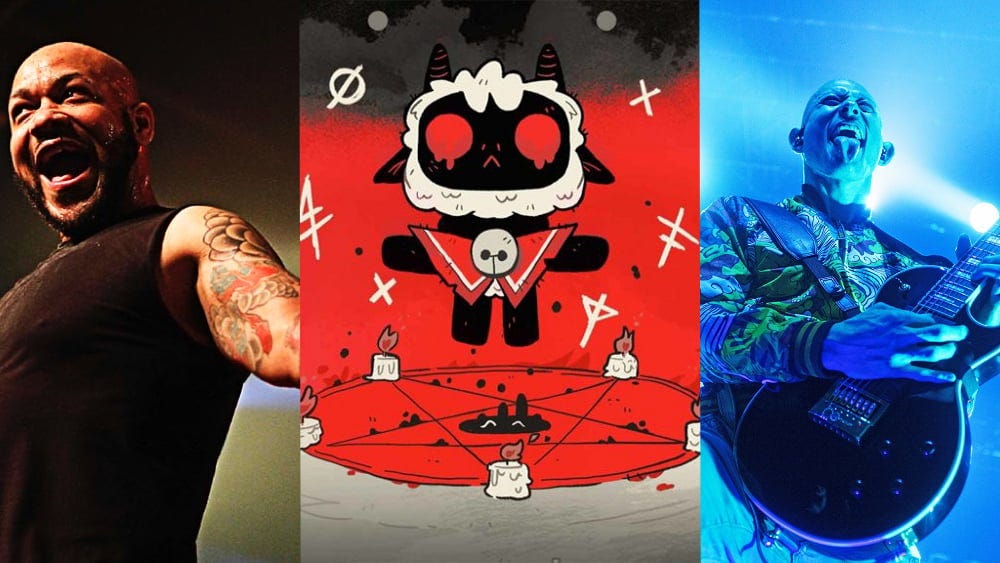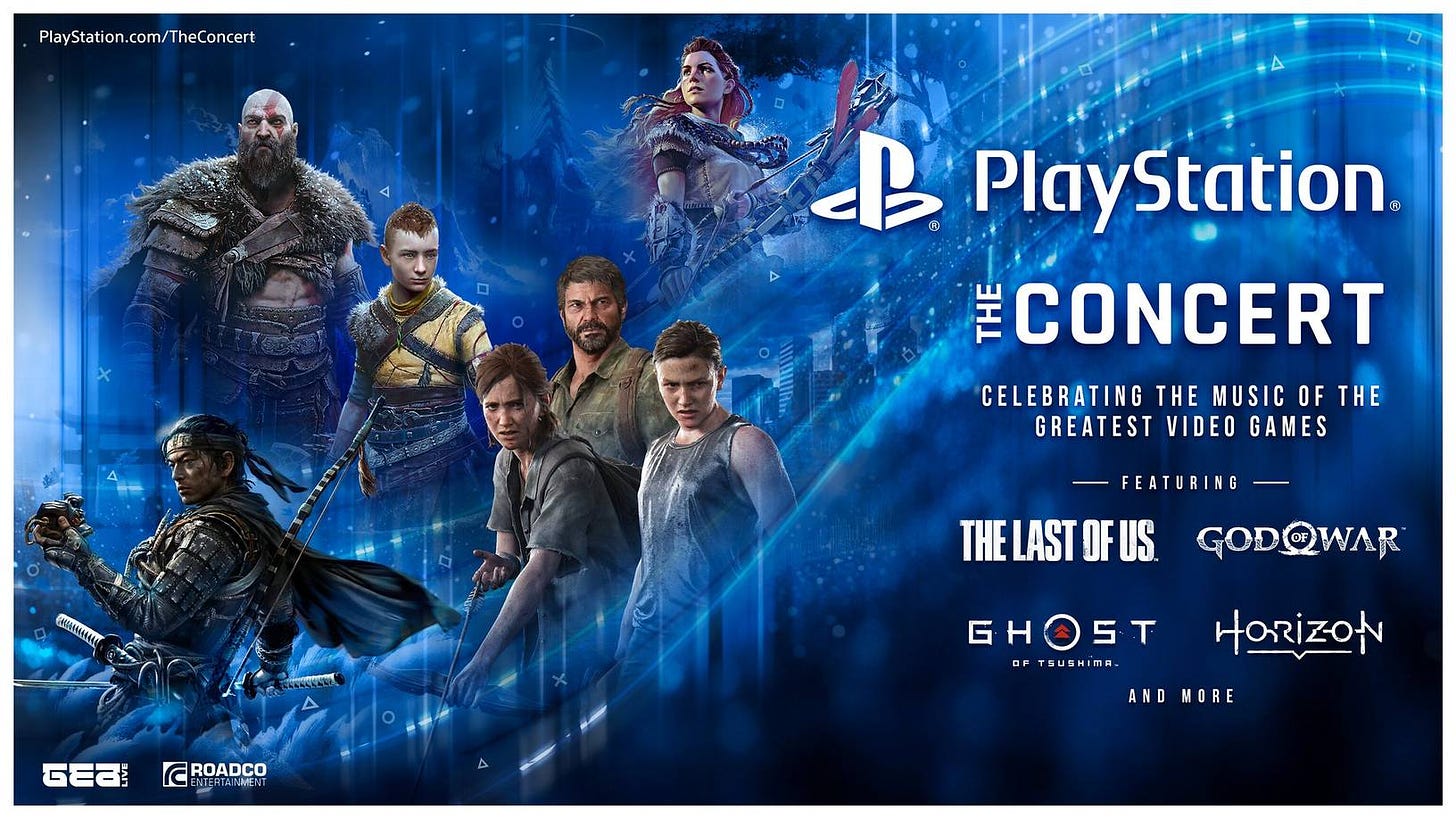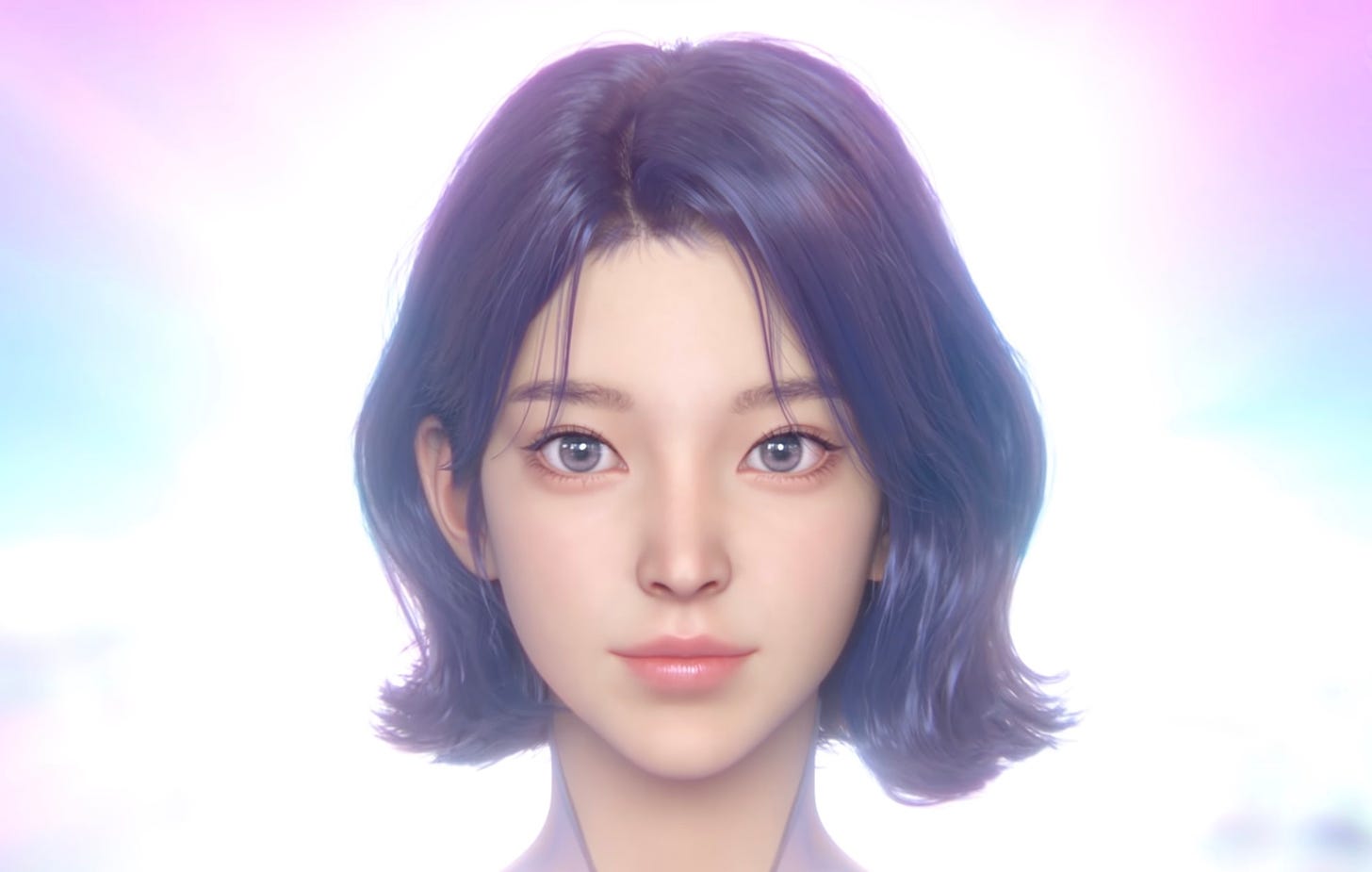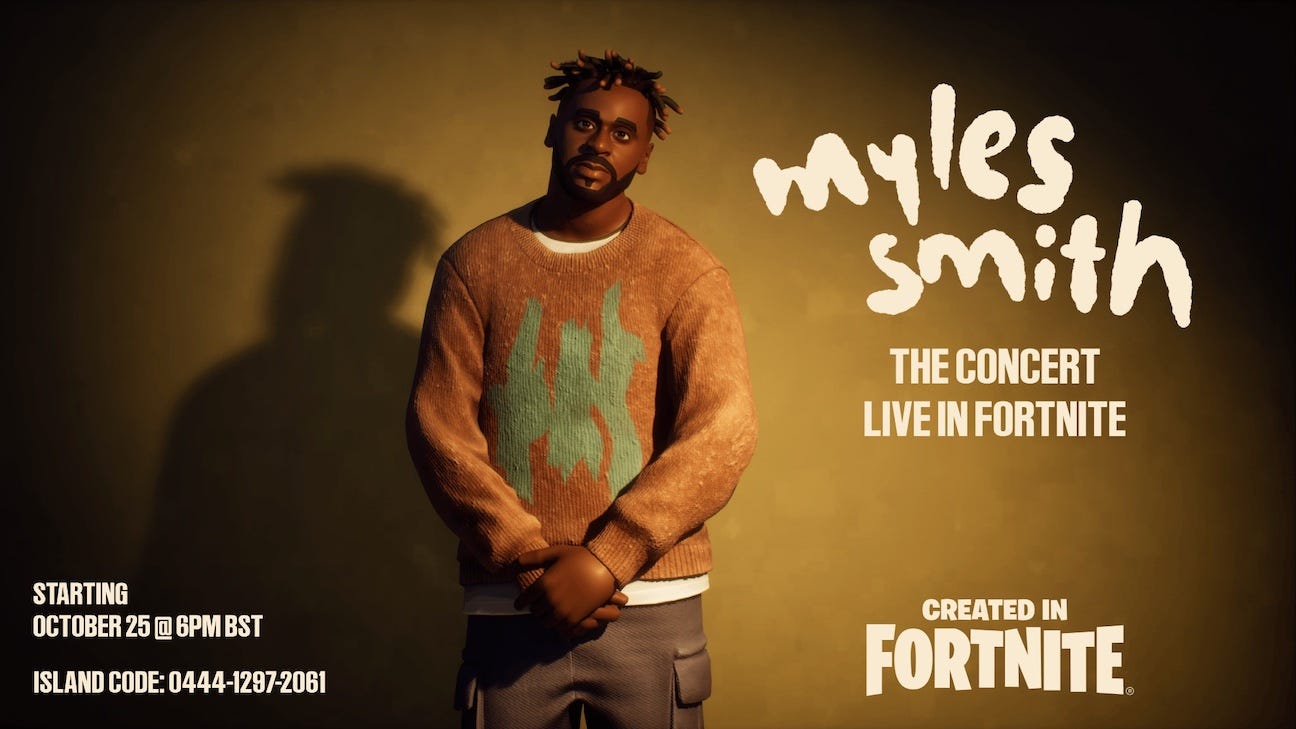[Game Music Digest] The Secrets to a Successful Music and Gaming Collaboration
How heavy metal legends embedded themselves in the indie game community
Game Music Digest is a weekly wrap-up of the most interesting stories at the intersection of video games and music, brought to you by music and gaming newsletter, MusicEXP. Subscribe to keep on top of the latest trends in video games and music delivered straight to your inbox every week.
Want more music and gaming news? Subscribe to my music and gaming podcast GXM, which I co-host with Laced A&R and community manager, Tom Quillfeldt. The latest episode features music licensing expert Vickie Nauman, who talks about some of the biggest music licensing trends impacting video games in 2024.
The Secrets to a Successful Music and Gaming Collaboration

There’s no shortage of bands and artists looking for opportunities in the gaming space. Similarly, there’s a growing number of game studios that are embracing music collaborations to attract new users to existing games, launch IP, or tap into music audiences.
But how do these collaborations come together? And what’s the secret to making them a success?
At Laced, we recently launched Cult of the Lamb: Hymns of the Unholy, a six-track metal reimagining of River Boy’s iconic soundtrack for Massive Monster’s best-selling indie game, Cult of the Lamb. The album, written and produced by Sam George at Mammoth Sound Studio, features lyrics and vocals by Howard Jones (ex-Killswitch Engage) and Matthew K. Heafy (Trivium), guitars by Scott Le Page & Clay Gober (Polyphia), Javier Reyes (Animals as Leaders), Josh Baines (Malevolence), Sean Long (While She Sleeps), and drums by Mike Malyan (ex-Monuments).
As much as I wish this was our idea, this project was the brainchild of the creative geniuses at Massive Monster. That said, we took their initial brief of getting Howard Jones on board to do vocals for existing tracks and suggested getting a guest guitarist on every song and an additional vocalist to take the project to the next level. This resulted in us working on a shortlist of dream collaborators, which ultimately led to me overseeing artist outreach and liaison, and overseeing the project from start to finish.
The reception has been incredible. The music video for the lead single, ‘CULT’, has more than 200k plays on YouTube, and the album already has more than 150k plays on DSPs since its release on October 21. We’ve picked up press coverage and radio plays in more than 50 publications, including the BBC, ABC, Metal Hammer, Kerrang, NME, IGN, Eurogamer and many more.
I thought it would be useful to share some of the key learnings from the project, which will hopefully help other game studios and music companies looking to explore similar collaborations. On that note, if you fall into either of those categories, get in touch because I’d love to make more cool shit like this happen!
Think big. Dare to experiment.
This project wouldn’t have been possible if it wasn’t for Massive Monster and Devolver’s willingness to embrace wild ideas. This is the same company that literally married two couples at a Cult of the Lamb ceremony at PAX Australia a few weeks back. A lot of the best projects start with ‘Wouldn’t it be cool, if…’ and there was absolutely no pushback from anyone involved with this on ideas that could help take this to the next level. In addition to creating a slamming set of tunes, Massive Monster worked with the designers God Machine and Nekromorph to create death metal-inspired artwork, logos and merchandise. Lyric videos for every song helped us reach audiences on YouTube via a direct link, with the added benefit of YouTube comments showcasing the fan reception to the tunes.
Work well in advance of deadlines and don't set arbitrary deadlines for the sake of it.
We were lucky that this project wasn’t tied to a specific game launch. Music and gaming collaborations have A LOT of moving parts, especially when you’re trying to coordinate a massive group of artists, all of whom have their own schedules (writing new songs, rehearsals, touring, etc.!) When you’re working with multiple artists, make sure you’re factoring in time for edits, tracking new sections, recording, and most importantly - sign-off!
RESEARCH and know your audience
This was a dream project for both Laced and Massive Monster because a lot of us are metal heads, so choosing the right artists for this came naturally. As an example, River Boy’s original soundtrack for the game has elements that aren’t worlds apart from Polyphia’s writing style, and they seemed like a natural fit for the project. Gamers are cynical, and any music and gaming collaboration needs to make sense. If it isn’t the right fit, it’ll get torn apart. It helped that I have a spreadsheet tracking which bands and artists play video games (something I’ve pulled together through extensive Google searches and research!) which helped us know who else would be the right fit for this.
Warm up press weeks in advance of launching - think of alternative story angles
I’d spent weeks chatting to the BBC journalist and pitching a variety of angles to approach this story from. Similarly, I put out a tweet a few months ago teasing a massive heavy metal and gaming collaboration that let me build a dedicated media list of heavy metal and gaming fans. If you want word of your project to spread far and wide, be prepared to put in the hours and research to help writers build story angles that are relevant to their audiences.
Direct contact with artists makes everything easier
We pulled this project together through a mix of direct outreach to artists and management companies. All of the managers we worked with on this have been awesome, but they’re busy people and the project at times required direct communication with the artists to talk about specific music components or extrapolate on certain elements of the brief. This is especially important when management might not understand video game terminology.
Utilise assets to extend the length of your campaign
We didn’t want this project to be a simple ‘Let’s drop everything at once’ because that runs the risk of having a huge spike of activity that quickly disappears. Our launch plan for this focussed on the release of a lead single with a music video, followed by the full album release on DSPs a week later. In the days proceeding the single drop, we placed some of the songs and lyric videos as exclusives in key target publications. Massive Monster and Devolver created some amazing social assets, and we did the same at Laced, supplying these to all of the artists so they could repost on their own channels. Sam (producer) also set up interviews with Howard Jones and Heafy to provide some behind-the-scenes insight into the writing and production process. In short, we had A LOT of material for everyone to share to keep the excitement for this project pushing forward, which should hopefully continue in the coming weeks and/or months!
How can bands and artists get involved with video game collaborations?
I recently got back from a panel at WOMEX on the opportunities in music and gaming, and one of the biggest questions from audience members was ‘how can I get into video games?’
As far as collaborations like this are concerned, the one piece of advice I always give to the music industry is: Let everyone know how much you love video games. Get the word out on social media. Show your fans what games you’re playing. If there’s a certain game or studio you really love, find the relevant contacts on social media platforms or via email and let them know. Create content that shows you live video games and proves you understand the space, whether it’s talking about your favourite games or performing covers of your favourite songs. If you’ve got an idea, don’t be afraid to share it!
PlayStation Launches ‘PlayStation The Concert - World Tour’
PlayStation has announced a worldwide concert tour featuring music from its most iconic franchises including The Last of Us, God of War, Ghost of Tsushima, Horizon and more. The global tour launches with a world premiere in Dublin, Ireland on April 2025 before heading to more than 200 cities across Europe, the United Kingdom, the United States, and more world locations to be announced.
EXP: This worldwide concert tour follows the success of 2018’s sell-out ‘PlayStation in Concert’ at the Royal Albert Hall in London. It’s great to see PlayStation celebrating the importance of video game music, but six dates in one month at massive venues in Birmingham, Manchester, Leeds, Newcastle, Glasgow and London is incredibly optimistic as far as ticket sales are concerned. Most video game concert productions of this size and scale only head to one or a couple of UK cities (usually London, Birmingham, Glasgow), as the die-hard fans are more than willing to travel. My worry is the close proximity of places like Leeds and Manchester, where audiences will eat into each other. I want to see this do well, though, and hope I’ll be proven wrong!
Inside Nævis: SM Entertainment reveals how its virtual idol was made
Korea JooAng Daily recently interviewed Park Jun-young, the chief director of SM Entertainment’s virtual IP centre, to learn how companies such as SM Entertainment are combining K-Pop and streaming trends with AI technology to create virtual artists. Nævis began as an R&D project in 2017 but rose to prominence in 2020 when she was incorporated into the lore of SM Entertainment's K-pop group, Aespa. According to Jun-young: “We established a detailed three-year plan for naevis. There could be some differences in execution due to various circumstances, but we have prepared things for the global stage as well as for specific regions, periods, genres, content and collaboration that can only be done by naevis. We also have webtoons, games, online streaming content and animations ready.”
EXP: Western music companies are missing a major business opportunity by not tapping into the virtual artist hype. This is an easy way into the games industry too, as there’s a natural crossover between the fandoms for K-pop, virtual artists and video games. Every major label should have an R&D team exploring the opportunities in the virtual artist space right now and it would do well to follow a similar strategy to what SM Entertainment has done, which used the success of Aespa as a launching pad for Naevis with a clever collaboration. If you’re interested in learning more about virtual artists, I’d recommend reading the lead story in a MusicEXP newsletter from September: Are VTubers and Virtual Artists The Next Big Music & Gaming Opportunity?
Will Sony’s Investment Into Sony Immersive Music Studios Pay Off?
Sony Music recently hosted an Immersive Tech Day for an exclusive audience of executives and journalists to showcase the work of Sony Immersive Music Studios, a division set up to expand fan engagement and explore new opportunities with fans on gaming platforms and other immersive spaces. Music Week has the write-up, but the main highlights were new music launches on two UEFN Fortnite maps and an activation by Little Mix’s Jade Thirlwall (JADE) in Sony’s Roblox experience, AVNU: Where Music Meets.
EXP: I applaud any company making investments into gaming, but I think it’s important to highlight the numbers here - something that journalists and execs often shy away from. The Myles Smith concert peaked at 650 concurrent users, while the studio’s activation for Puerto Rican singer FARRUKO in its new UEFN map Nitewave island peaked at 166 users. While I couldn’t find figures for the Roblox activation at the time of launch, there are currently THREE (yes, 3) people playing Sony’s ANVU: Where Music Meets Roblox experience at the time of writing. There’s no doubt that Sony Immersive Music Studios is doing some amazing stuff, but is this level of investment really worth the payoff of reaching a couple of hundred fans in gaming spaces? Surely it makes sense for Sony to break artists through collaborations with its first-party or partner gaming studios where it’s able to reach millions of engaged players, rather than hundreds?
In other news…
Forbes speaks to American singer and songwriter Poe about her work on the Alan Wake games. [Link]
Speaking of Alan Wake, you can pre-order the vinyl for Alan Wake 2 courtesy of Laced Records. [Link]
NME chats to composer Jack Wall about his work on Call of Duty: Black Ops 6 and why it’s a love letter to the early ‘90s. [Link]
I didn’t have Rage Against the Machine’s guitarist and a South Korean boy band collaborating for a video game adaptation on my 2024 bingo list, but should we expect any less from Riot Games?! [Link]
Remember WAVE? The legendary VR concert platform is back and has big things planned for the future. [Link]
I loved reading this local story about a community of rhythm game enthusiasts in Philadelphia that comes together to play arcade games like Dance Dance Revolution. [Link]
Reactional Music has signed a gaming and licensing deal with Classical music label, Naxos. [Link]
Battle royale shooter Free Fire collaborated with Brazilian rapper and singer Matuê on a new music video, presumably to bolster its UA efforts in the country. [Link]
New mobile game music studio, Maintain Altitude, has raised $500k in a pre-seed funding round. Keep your eyes on these guys. [Link]
Anthony Pisano, founder of Game Over Talent, reveals how he’s using streaming platforms to break new artists in partnership with prominent gaming streamers. Well worth a read. [Link]
If you want to learn more about music in video games, please, please, please, please make sure you watch Save & Sound, an online music festival dedicated to music in video games. It features performances, composer interviews, Q&As, panels and so much more. You can watch it online for FREE on November 4-5. [Link]





